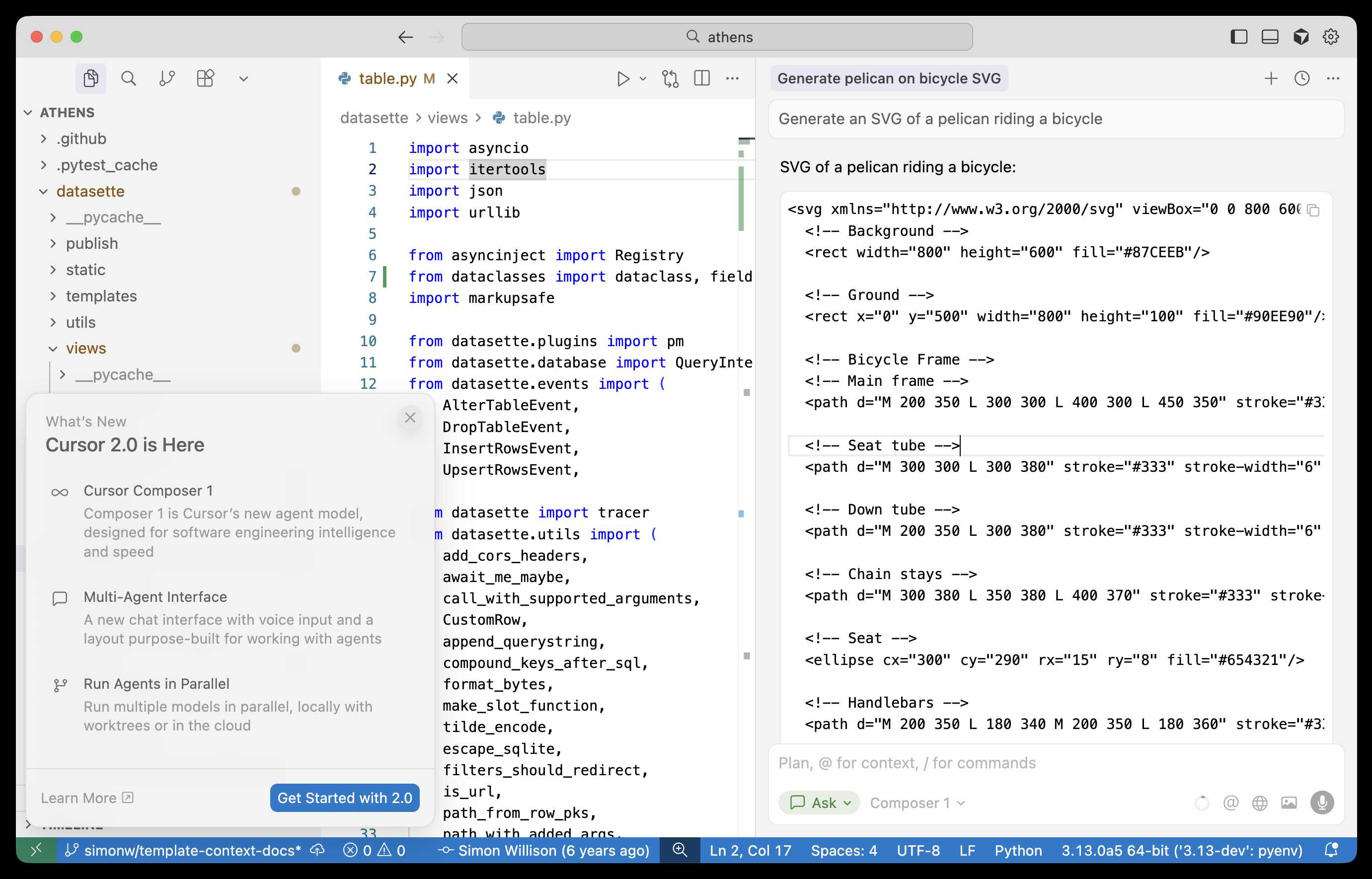Composer: Building a fast frontier model with RL (via) Cursor released Cursor 2.0 today, with a refreshed UI focused on agentic coding (and running agents in parallel) and a new model that's unique to Cursor called Composer 1.
As far as I can tell there's no way to call the model directly via an API, so I fired up "Ask" mode in Cursor's chat side panel and asked it to "Generate an SVG of a pelican riding a bicycle":

Here's the result:

The notable thing about Composer-1 is that it is designed to be fast. The pelican certainly came back quickly, and in their announcement they describe it as being "4x faster than similarly intelligent models".
It's interesting to see Cursor investing resources in training their own code-specific model - similar to GPT-5-Codex or Qwen3-Coder. From their post:
Composer is a mixture-of-experts (MoE) language model supporting long-context generation and understanding. It is specialized for software engineering through reinforcement learning (RL) in a diverse range of development environments. [...]
Efficient training of large MoE models requires significant investment into building infrastructure and systems research. We built custom training infrastructure leveraging PyTorch and Ray to power asynchronous reinforcement learning at scale. We natively train our models at low precision by combining our MXFP8 MoE kernels with expert parallelism and hybrid sharded data parallelism, allowing us to scale training to thousands of NVIDIA GPUs with minimal communication cost. [...]
During RL, we want our model to be able to call any tool in the Cursor Agent harness. These tools allow editing code, using semantic search, grepping strings, and running terminal commands. At our scale, teaching the model to effectively call these tools requires running hundreds of thousands of concurrent sandboxed coding environments in the cloud.
One detail that's notably absent from their description: did they train the model from scratch, or did they start with an existing open-weights model such as something from Qwen or GLM?
Cursor researcher Sasha Rush has been answering questions on Hacker News, but has so far been evasive in answering questions about the base model. When directly asked "is Composer a fine tune of an existing open source base model?" they replied:
Our primary focus is on RL post-training. We think that is the best way to get the model to be a strong interactive agent.
Sasha did confirm that rumors of an earlier Cursor preview model, Cheetah, being based on a model by xAI's Grok were "Straight up untrue."
Recent articles
- Useful patterns for building HTML tools - 10th December 2025
- Under the hood of Canada Spends with Brendan Samek - 9th December 2025
- Highlights from my appearance on the Data Renegades podcast with CL Kao and Dori Wilson - 26th November 2025